After the Other Muldoon came up trumps with his suggestion of Oxford I decided to follow his advice and pull up at Camberley Heath. Designed in 1913, fairly early in Colt's career, Camberley is a joy to play. However, I will get the bad points squared away immediately so as to try and not harp on the negative too much. First, the bunkering is a slop job. One will clearly see this as the tour progresses. Second, the pond on 16 - huh! Its a shocker. Mind you, the hole with or without a pond is drab. I think a great many of the "improvements" were made when a Japanese contingent owned the course, including the huge clubhouse and the mounding behind #3 when the underpass was built. I was struck by all the mounding around the course. I haven't seen another Colt course use this element so blatantly, mind you, much of this handiwork is diminished by tree growth which isn't too harsh, but it does annoy at times. On to the course.
#1 brings a promising start. The hole originally played from a tee perhaps 40 yards behind the present one in an area just in front of where the old clubhouse used to stand.

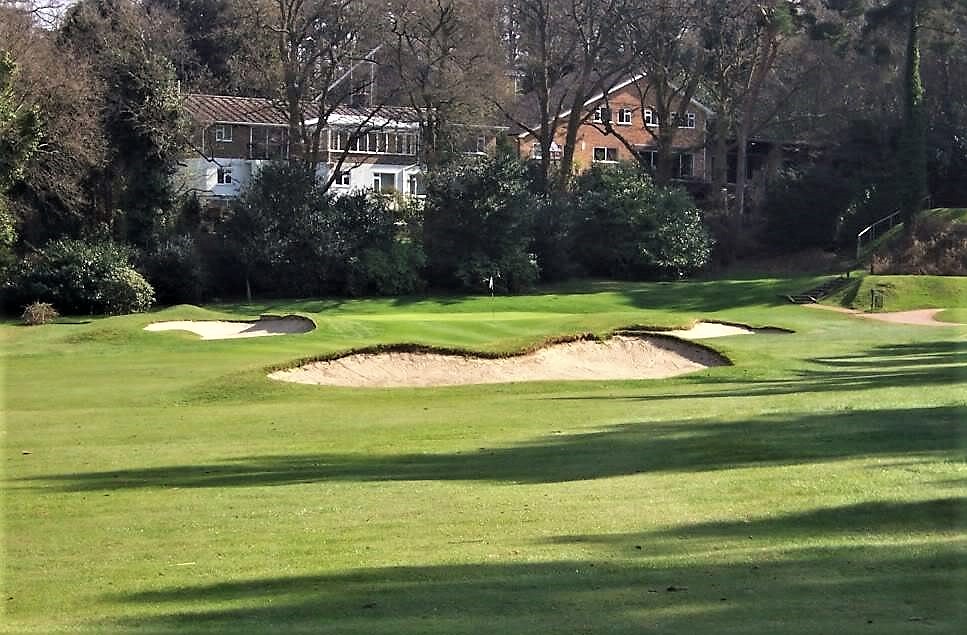
True to Colt's standards, all the short holes are a delight. The 2nd is particularly good because the green has two tiers and a ridge bisecting the green into left and right halves as well.

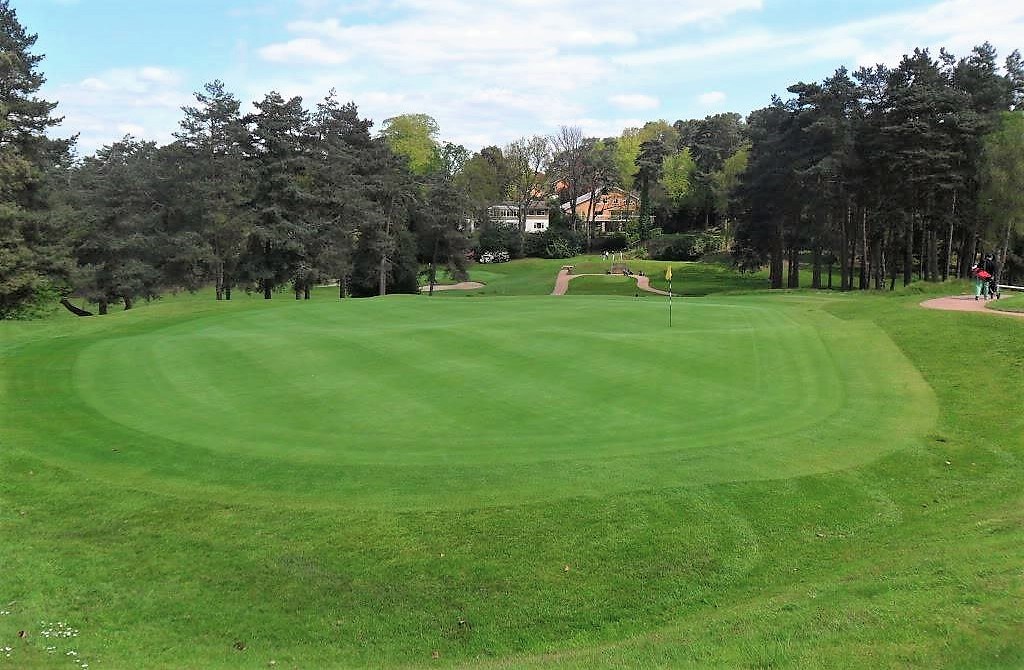
The three-shot 3rd is a terrific hole and the favourite of many. If one hits an average drive the alps-like hill poses an interesting dilemma.
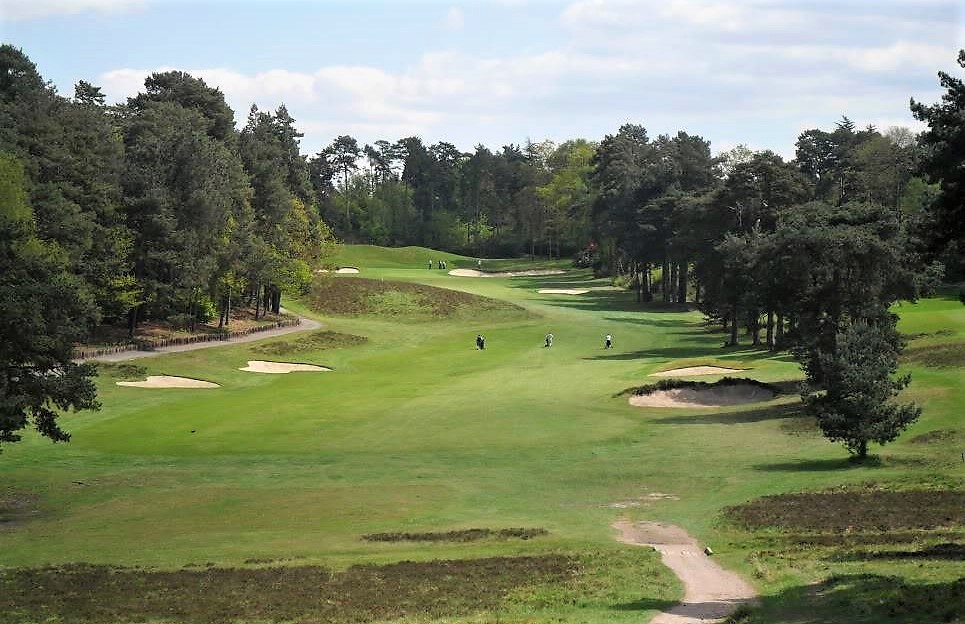
The unmissable mounding behind the green is probably a visual block of nearby Chobham Rd.
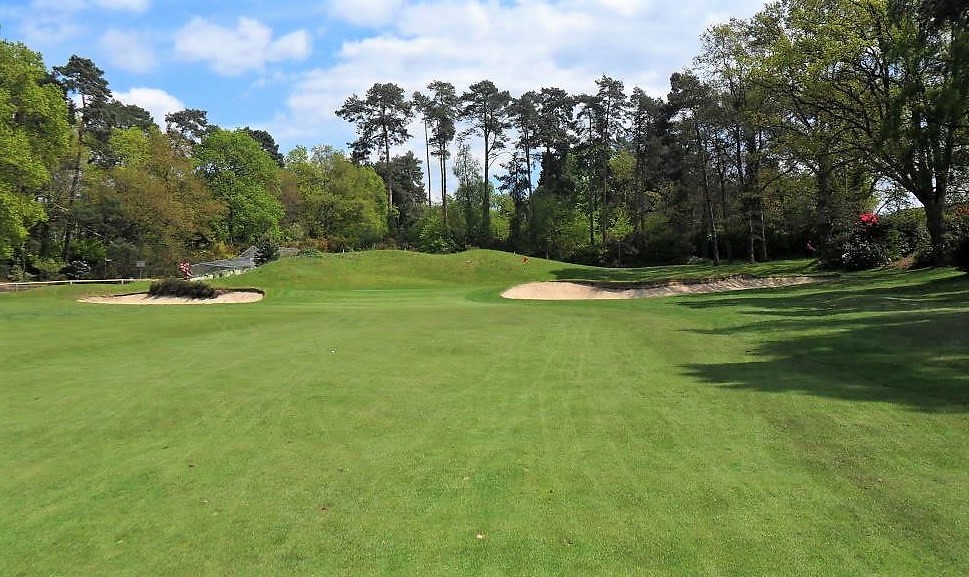
We now cross under the Chobham Road for what is half the course. The walk pays off for the the 4th is a gem of a hole which is drivable, but not without its risks. I am not sure who did much of the work at Camberley, but it is obvious this green is new. I suspect the green was grade level at one time and leaning away from the fairway. The new green is quite good and I like how it angles from left to right.
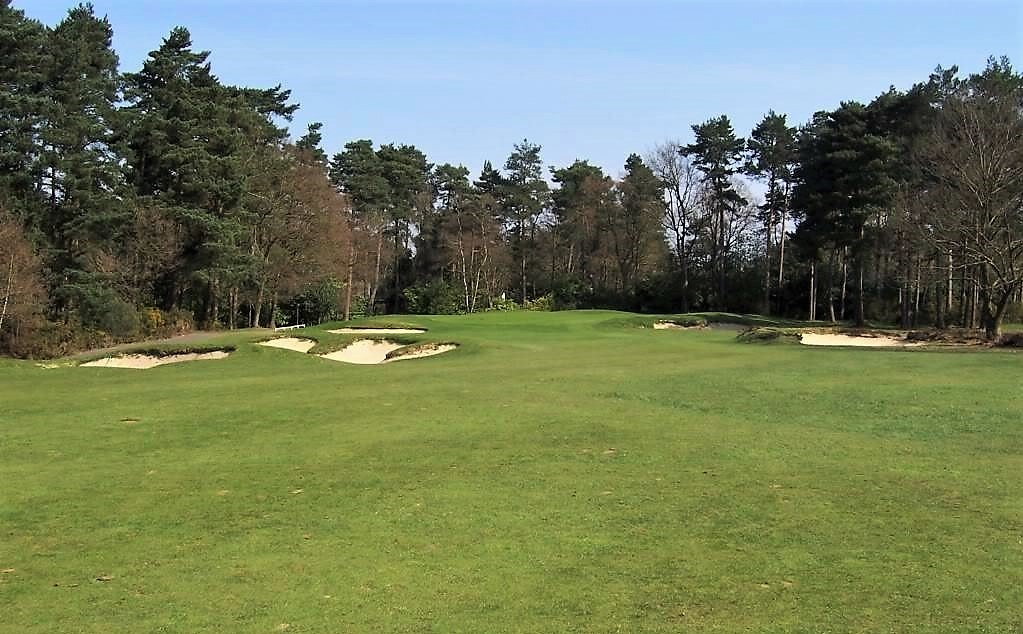
Like the 3rd, #5 requires big hitting, but the card is rather miserly in only offering four shots to cover 495 yards. I spose this is as good a hole as any to point out the lack of attention to details, which while not deal breakers, are important in the experience of the course. Fairway lines, scrubby trees inside the main tree line and wishy washy bunkering are issues which the club need to sort out.
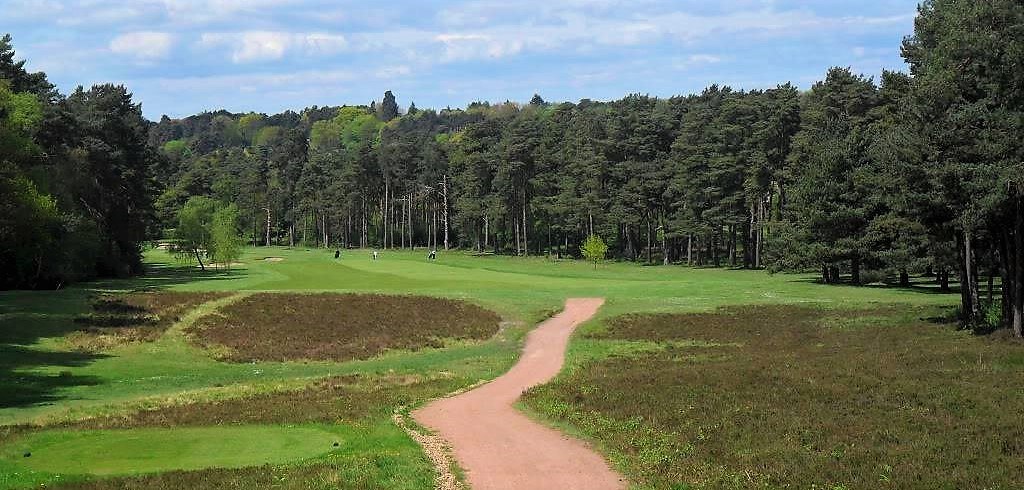

It is a shame the sixth comes so closely after the fourth for its another drivable two-shotter. Its set-up is rather similar to the 4th, legging left with oob down the left and bunkers everywhere.
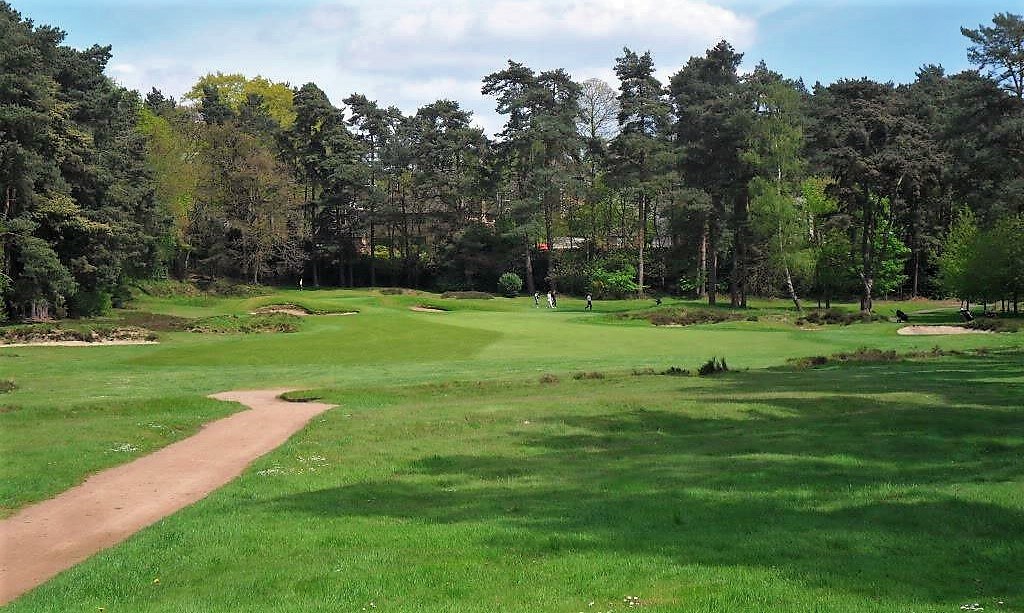
I suspect this is a new green.

The following hole used to play straightaway, but a tee was placed near the lay-up area for the 6th hole which created a dogleg right. Its a better hole, but I am not sure it is worth the 100 yard walk. Perhaps if the bunkers were better integrated I would change my mind. The approach is deceptively uphill and dead ends into the fairway corridor of #10. This routing technique was used to great effect by Braid at Pennard.
The 8th is a solid benched-green par 3 with its aesthetics crossed a bit by the path.
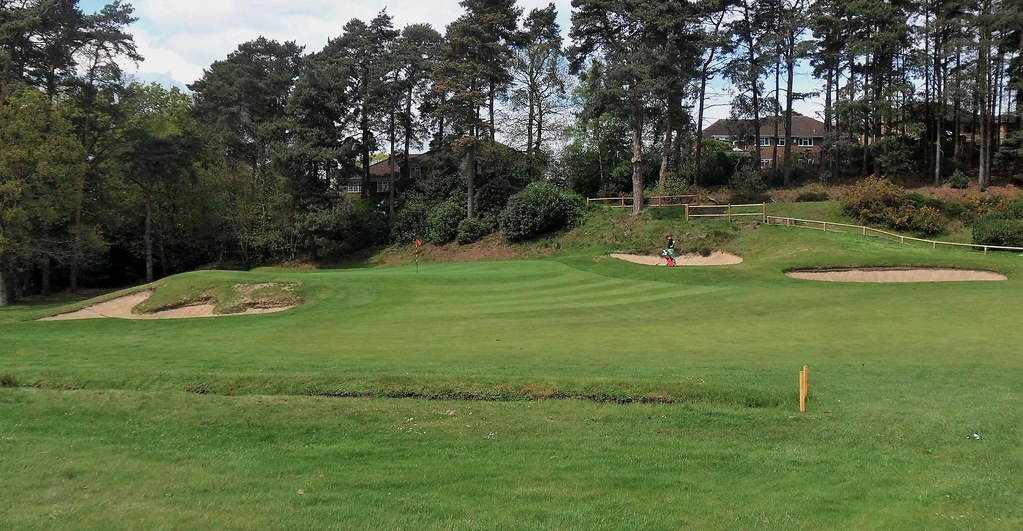
The outward nine finishes with a shortish par 5 cutting up the head of a little valley. This is a hole Tom Simpson was involved in designing, but I fear it has been greatly altered.
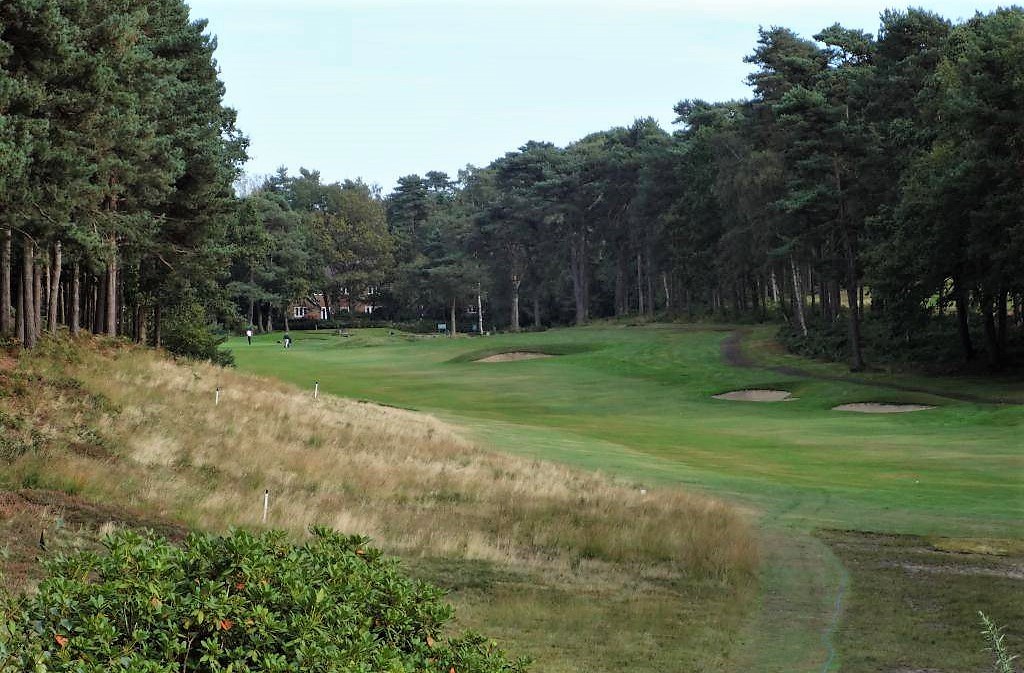
The second isn't terribly onerous, but the player needs to keep right, near more curious mounds to earn the best angle of the approach. In recent years the green has been extended to accommodate more difficult hole locations.

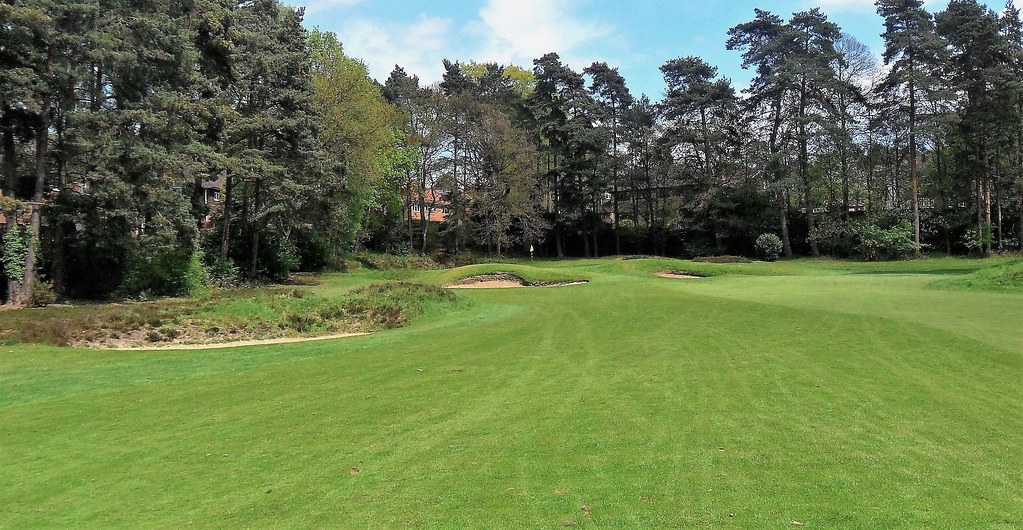
Much like a links, the golfer is now at the furthest point away from the clubhouse. The property, which looks like an arched ballerina's foot, is not suitable for two loops of nine. However, Colt creatively designed a routing whereby one can play a perfectly flowing nine holes by jumping to the adjacent tee 13th after playing #3. Additionally, there are a few other opportunities to easily cut short a full round if so desired. The 10th is a double valley hole over heather and canting severely to the right. The photo below is taken from just shy of the first crest. Even from here the second dip isn't obvious.
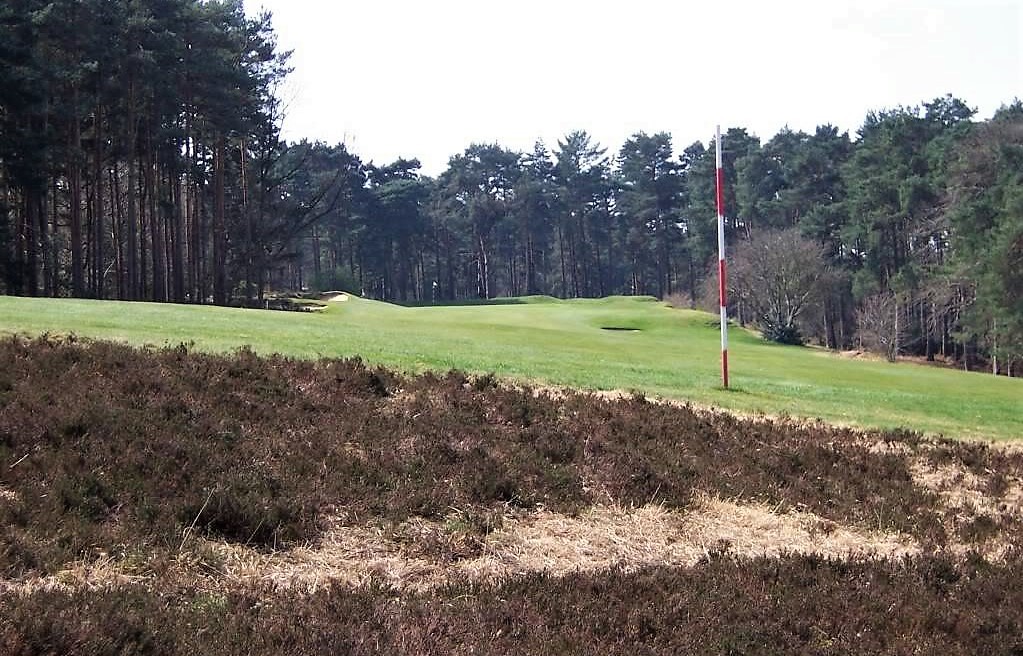
A longish par 3, the 11th features a flat landing area short of the green. Often times for the British archies of Colt's era this sort of characteristic signals a front to back green.

The modest length 12th offers a break by playing over flat ground. The foliage to the rear of the green hides more huge mounding. There is also some wild stuff down the left. I know I keep hammering on about the mounding, but I found it to be incredible. If I didn't know Camberley Heath was a Colt course I would swear Fowler had a hand in its design. After crossing once again under the Chobham Road we play the final three-shotter. As on the tenth, heather cuts the 13th fairway in two and thus thwarts the flat belly from driving to the bottom of the hill.
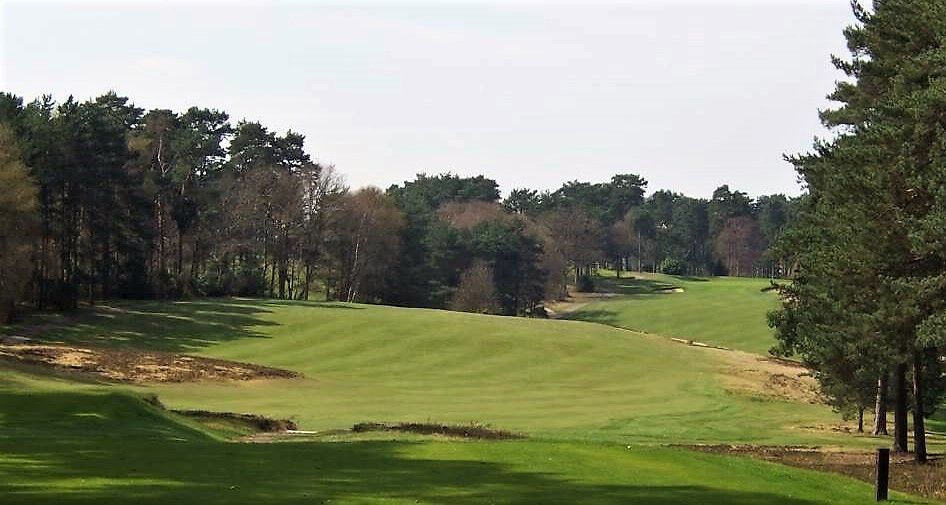
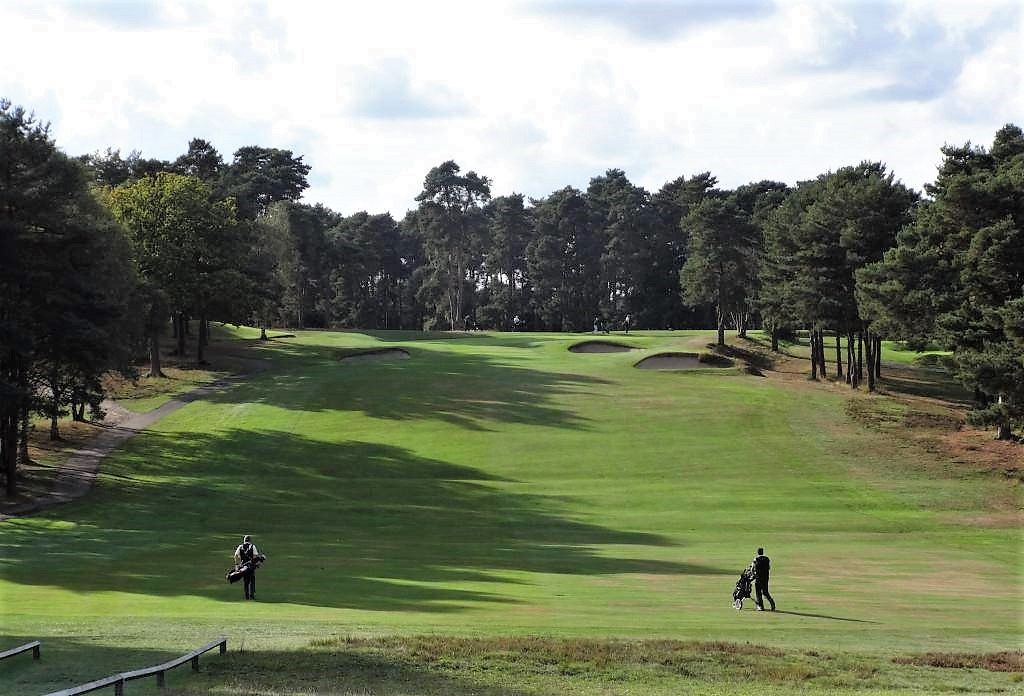
#14 takes us back to the house. There are a handful of sloping front to back greens, but this short hole's green is the most severe of this type and thus explains the placement of the forward bunker. Notice the wee mound to the rear of the green. This is much more what I think of the typical Colt mounding which invariably frames greens.
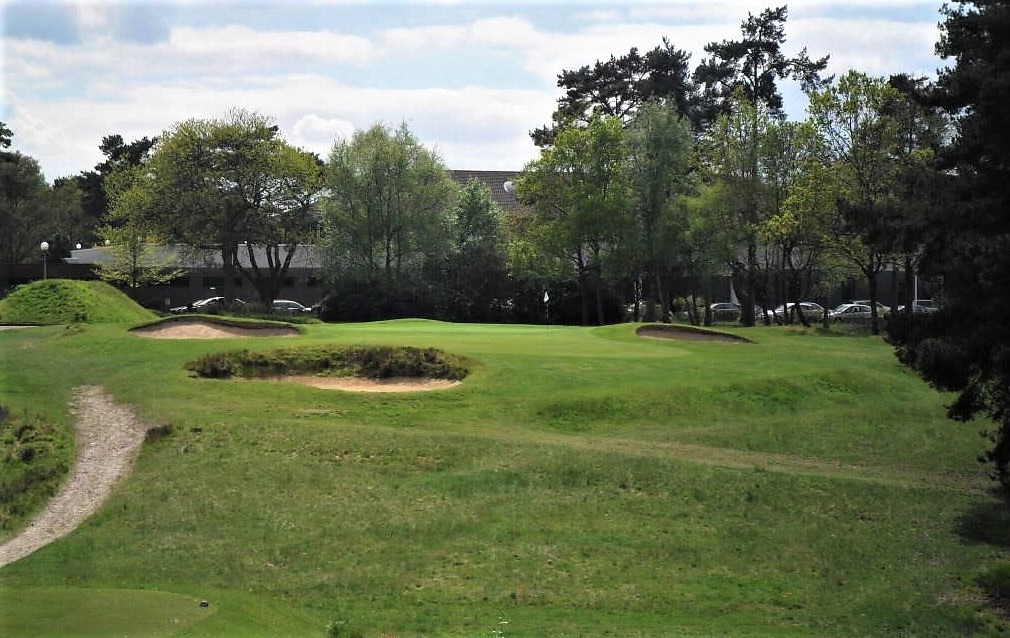
The short, two-shotter 15th has a blind drive and plays to a corner of the course. It feels a bit like Colt ran out of room in this section of the property.
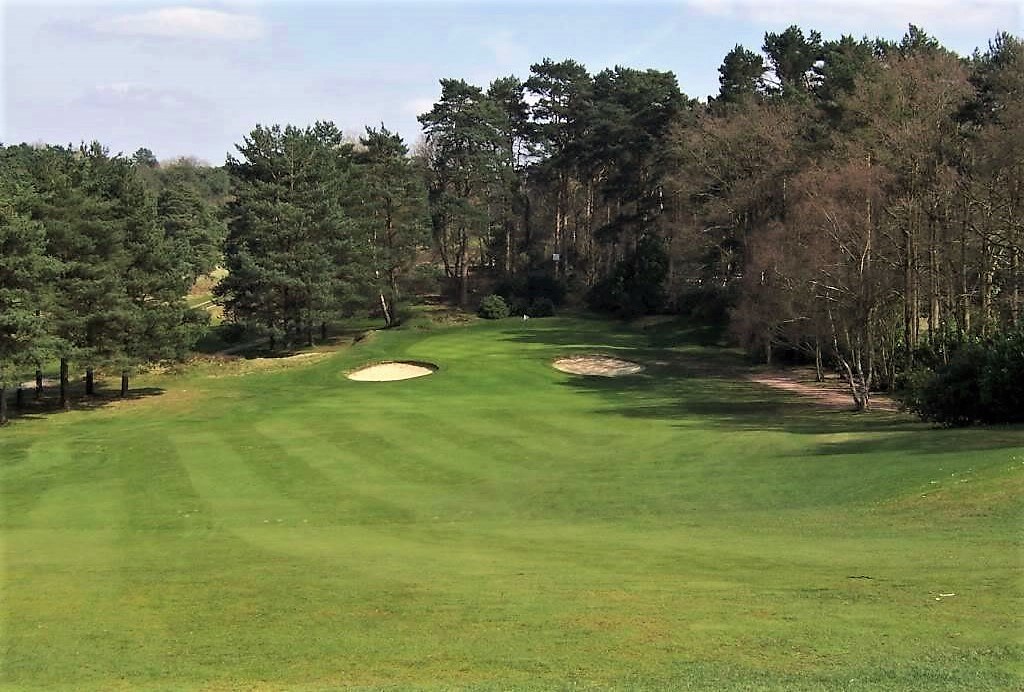
The 16th showcases what has to be one of the worst features I have ever seen added to a Colt course...enough said! Thankfully, the remaining two holes bring us home in style. The penultimate hole asks the golfer to play well left to earn a solid view of the hole by remaining on the same level as the green. However, this safe play isn't at all obvious! The play to the right is shorter, but must flirt with the bunker and it leaves an obscured approach.
The home hole is a doozy. It reminds me of a shortened version of St Enodoc's 10th! Is the play right or down the skinny strip of fairway to the left? Today this wasn't a difficult decision, but I can imagine the golfer leaning into a cold winter's wind and not coming up with the correct choice, if there is one. I don't imagine Colt thought golfers could carry the hill so the choice looks to be more limited back in his day.
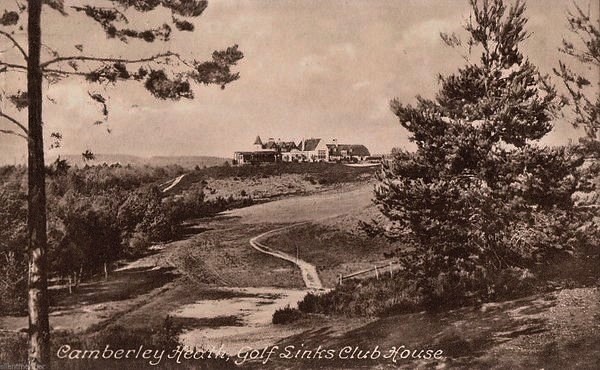
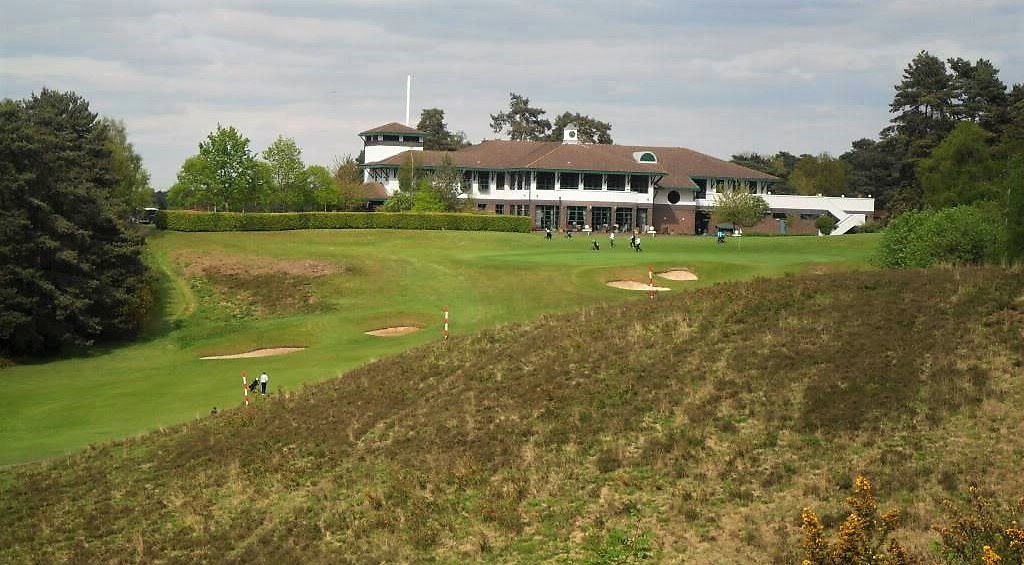
The approach if one successfully carries the hill, although many can drive this green.
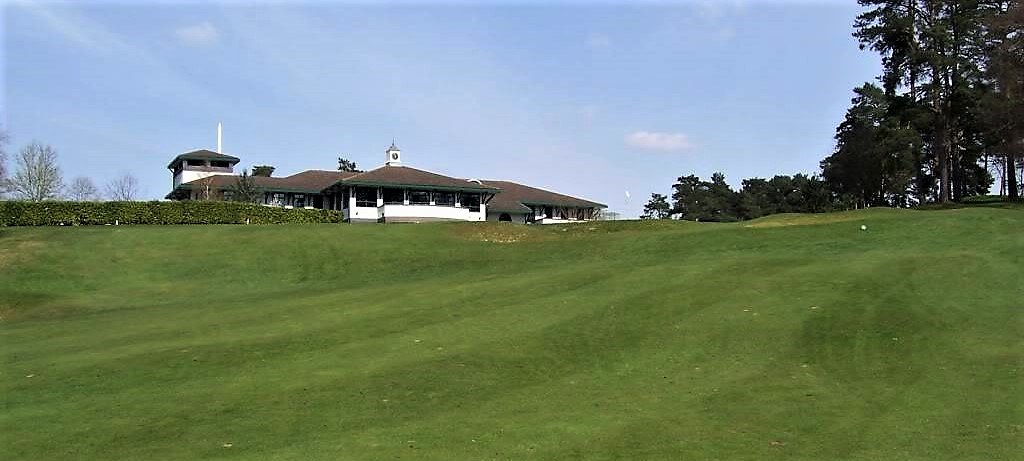
A look at Simpson's wild 18th green with the old house in the background. This green was some distance short and a bit right of the current green....which created more of a dogleg effect from the tee.
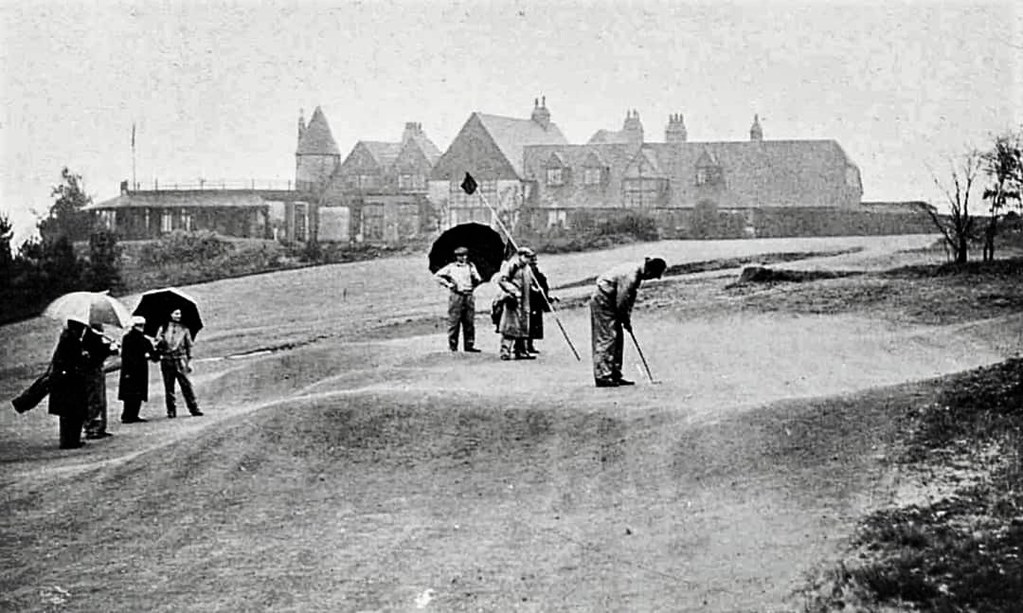
Camberley Heath rises wonderfully above the disjointed, sometimes misplaced bunkers and the odd feature or two which rankle. The routing is superb and affords all manner of holes; valley, double valley, up n' overs, flat, sidehill - did I miss anything? This course is a bit too inconsistent to be in the league with some of the well known courses of London, but I think Camberley Heath stands apart because of its very good 3s and 5s. The course does, however, seem to suffer from soft greens and for this reason I can't give it a 1*. If anything Camberley Heath demonstrates how deep the quality of golf around London is and that one needn't necessarily pay top whack for interesting, fun, quality golf.
If folks do decide to visit Camberley Heath, be sure to take a look at the trophy case behind the pro shop. There is a touching display of Molly Gourlay memorabilia. Several medals, paper clippings, posters etc are the mainstay of the collection. Sadly, no mention is made of Mrs Gourlay's architectural contributions at Ballybunion or County Louth, but one can't help but be impressed by her career as a golfer. Rumour has it that when Simpson made minor changes at Camberley Heath that Molly Gourlay was the supervising architect. 2014
Simpson and Gourlay supervising work..I wish I knew where.

Gourlay showing off her graceful swing.
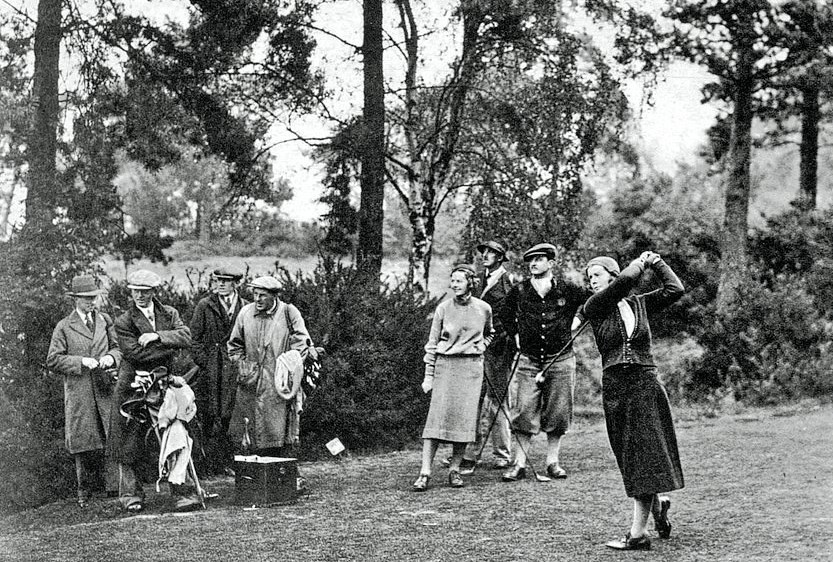
Ciao